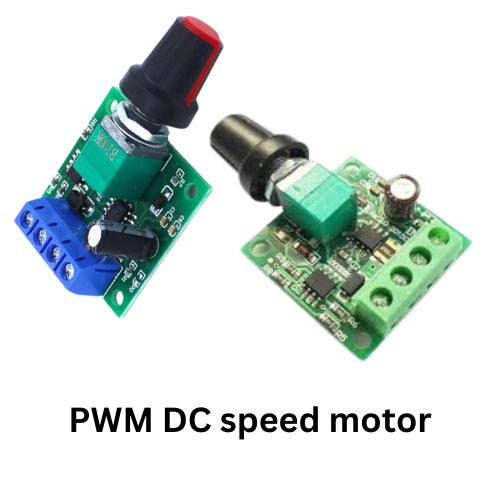Pulse Width Modulation (PWM) is a popular technique used to control the speed of DC motors efficiently. Instead of varying the voltage linearly (which wastes power), PWM rapidly switches the motor’s power ON and OFF at a fixed frequency, and controls the speed by varying the duty cycle of the pulses.
🔧 How It Works:
-
PWM Signal:
-
A digital signal that switches between ON (high) and OFF (low).
-
The frequency remains constant, but the duty cycle changes.
-
-
Duty Cycle:
-
It is the percentage of time the signal stays ON during one cycle.
-
Example:
-
100% Duty Cycle → Motor gets full voltage → Maximum speed.
-
50% Duty Cycle → Motor gets half power on average → Half speed.
-
0% Duty Cycle → No power → Motor stops.
-
-
-
Effect on Motor:
-
The average voltage supplied to the motor changes with the duty cycle.
-
Since motors respond to average voltage, changing the duty cycle controls speed.
-
Smooth acceleration and deceleration are possible with fine adjustments.
-
✅ Advantages of PWM Control:
-
High Efficiency: Minimal power loss compared to linear control.
-
Smooth Speed Control: Fine adjustments possible.
-
Less Heat Generation: Because the power devices are either fully on or off.
-
Inexpensive Implementation: Easily implemented with microcontrollers or PWM driver circuits.
📦 Applications:
-
Robotics
-
Electric vehicles
-
Fans and blowers
-
Industrial machines
-
Toys


Reviews
Clear filtersThere are no reviews yet.